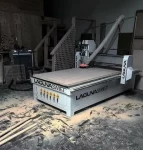The application of high-precision CNC grinding technology in parts manufacturing
Introduction
In today’s manufacturing industry, precision and quality are essential requirements for parts manufacturing. With the advancement of technology, high-precision CNC grinding has emerged as a crucial technique in achieving these requirements. This article explores the application of high-precision CNC grinding technology in parts manufacturing, highlighting its advantages and potential impact on the industry.
Improved Accuracy and Precision
One of the significant benefits of high-precision CNC grinding technology is its ability to achieve unparalleled accuracy and precision in parts manufacturing. Traditional grinding methods often lead to inconsistencies and variations, impacting the overall quality of the final product. With CNC grinding, however, the process is automated and controlled by computer programs, ensuring precise and consistent results every time.
This level of accuracy is particularly crucial in industries such as aerospace, automotive, and medical, where even a minute deviation can have severe consequences. High-precision CNC grinding technology enables manufacturers to produce parts with tight tolerances, meeting the stringent requirements of these industries. The use of advanced grinding machines and computer algorithms allows for micro-level adjustments, delivering parts that perfectly match design specifications.
Enhanced Efficiency and Productivity
Another advantage of high-precision CNC grinding technology is its ability to enhance efficiency and productivity in parts manufacturing. Manual grinding processes can be time-consuming and labor-intensive, requiring skilled operators and extensive setup. CNC grinding eliminates the need for manual intervention and reduces the time required to set up the machines.
Moreover, CNC grinding machines can operate continuously, optimizing production throughput. The automation of the grinding process not only reduces the chances of errors and rework but also frees up human resources to focus on other critical tasks. This improved efficiency leads to higher productivity and shorter lead times, allowing manufacturers to meet customer demands effectively.
Expanded Design Possibilities
High-precision CNC grinding technology opens up new design possibilities for parts manufacturing. The ability to produce complex shapes and intricate features with precision expands the scope of what can be achieved. With CNC grinding, manufacturers can create parts with intricate patterns, curved surfaces, and customized profiles that were once challenging or even impossible with traditional grinding methods.
This expanded design flexibility allows for innovation and optimization in various industries. For example, in the automotive sector, CNC grinding enables the production of lightweight and aerodynamic components, enhancing fuel efficiency and performance. In the medical field, it allows for the manufacturing of intricate surgical instruments, implants, and prosthetics that ensure better patient outcomes.
In conclusion, high-precision CNC grinding technology revolutionizes parts manufacturing by providing improved accuracy and precision, enhanced efficiency and productivity, and expanded design possibilities. This technology has a significant impact on industries that require high-quality and precise components. As technology continues to advance, we can expect further developments and refinements in CNC grinding, pushing the boundaries of what is possible in parts manufacturing.
.webp)
